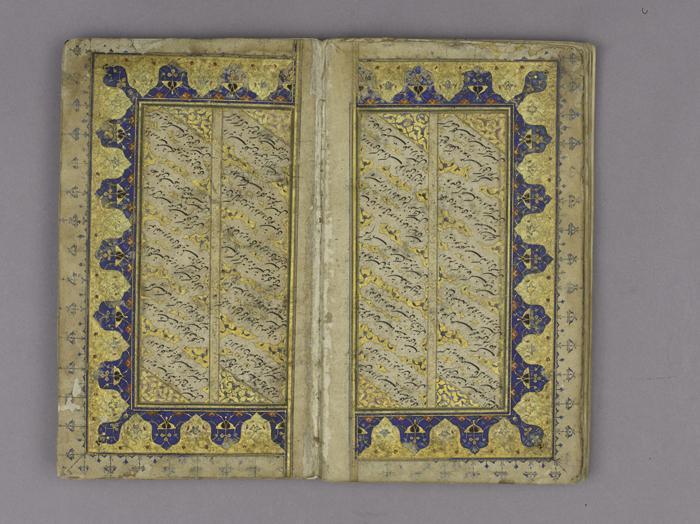
The Istanbul Research Institute’s new exhibition “Memories of Humankind: Stories from the Ottoman Manuscripts,” which opened on Oct. 18, brings up the Ottoman manuscript culture which gradually lost its importance as the printing press became widespread in the 19th century.
It ceased to be a source of information, stories, or spirituality for the masses in the 20th century, attracting the interest only of collectors.
Ottoman manuscript culture was shaped by the multilingual society of the empire in the permeable regions of the early modern period. Manuscripts that were read and circulated at the time and the manuscript culture gradually lost its importance in the 19th century as the printing press became widespread.
Books came out of the printer in thousands of copies, all the same, with the marginalia written by readers remained limited to their own copy; libraries punished members who wrote in books; and the text of the author became untouchable, unalterable.
Modern historiography’s relationship with manuscripts was also affected by these conditions regarding writing and reading. The literature came to be shaped by the quest for the “most accurate” text, the “most valuable” binding, and the “cleanest” copy, whereas manuscripts used to be a part of a much more collective world of literacy.
Texts changed in the hands of copyists and readers, and these changes could be traced physically on paper, where readers and authors engaged in a dialogue between lines and in margins. Reading was as collective an act as writing; there were people who read popular stories aloud in coffeehouses, and some readers answered the notes of previous readers.
“Memories of Humankind” exhibition enables visitors to better understand the collective writing-reading culture and the multilayered world of manuscripts based on recently developed new perspectives.
The exhibition, in a sense, requests visitors to address the history of reading along with the history of manuscripts and consider texts as open-ended creations in motion.
“Memories of Humankind” brings together İbrahim Ağa, the guardian of the Van Citadel who found time to copy manuscripts while on duty; Zübeyde Hanım, whose divan was widely circulated; Yirmisekiz Çelebi Mehmed Efendi, the Ottoman ambassador to France and who corrected his own manuscript; Rıfat from Kilis, who intervened with the text by scribbling in the margin, “whoever wrote this is wrong;” Enderunlu Fazıl, whose writings were scolded and censored but still made the rounds through word of mouth; the “Ya Kebikeç” talisman, written to protect the manuscript, and the bookworm that paid no attention; and hundreds of famous or anonymous writers and readers.
The exhibition, presenting a selection from the Suna and İnan Kıraç Foundation Manuscript Collection, invites visitors on a journey through texts, objects, and time, tracing the multilingualism of Ottoman society, daily life, medicine, knowledge of the universe and time, gender and sexuality, while also showing how to recreate Istanbul’s historical landscape using manuscripts.
“Memories of Humankind: Stories from the Ottoman Manuscripts” will be on view through July 25, 2020 at the Istanbul Research Institute.